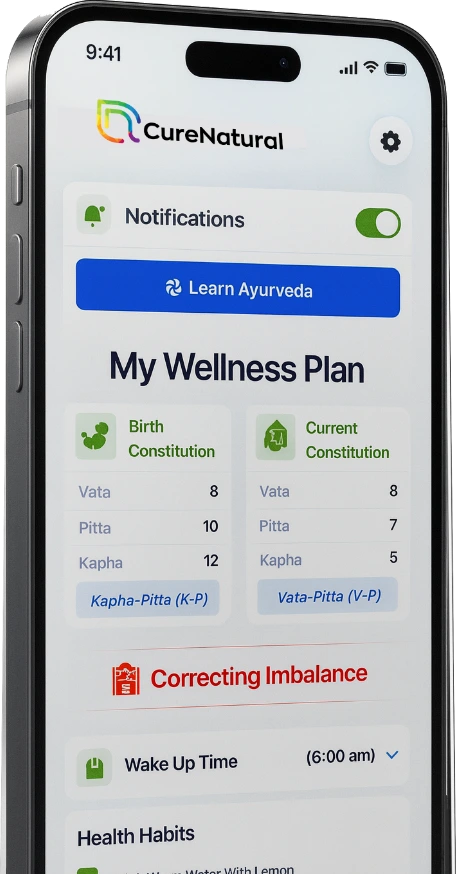Are you looking for a better way to take care of your health? The interest in holistic health is rising. It’s key to check out the many natural health learning options out there.
The field of natural health is wide and varied. It includes areas like Complementary medicine and Ayurvedic medicine. As more people want holistic care, the need for good education and training is also increasing.
Places like the Institute for Integrative Nutrition and Maryland University of Integrative Health have many alternative health courses and certifications. This article will look at the top 10 natural health courses. We’ll give you a quick look at the best ways to learn in this field.
Key Takeaways
- Explore the top 10 natural health courses for holistic well-being
- Discover the benefits of Complementary medicine and Ayurvedic medicine
- Learn about institutions offering quality natural health education
- Understand the growing demand for holistic health practitioners
- Find the right natural health course to suit your career goals
The Rising Demand for Alternative Health Courses in America
America is seeing a big increase in the need for alternative health courses. This shows a move towards a more holistic approach to well-being. People are becoming more aware of the benefits of complementary medicine and naturopathic medicine.
Why More Americans Are Pursuing Natural Health Education
More people are interested in natural health education for several reasons. Many are unhappy with traditional healthcare, which often just treats symptoms. They want a more holistic approach that looks at physical, emotional, and spiritual health.
Research is also playing a big role. Studies have shown that alternative therapies like acupuncture and herbal medicine can help with many health issues. This includes chronic pain and mental health problems.
What to Consider Before Choosing a Holistic Health Path
Before starting on a holistic health path, there are important things to think about. First, learn about the different holistic health practices. These include holistic medicine, naturopathic medicine, and complementary medicine. Each has its own way of looking at health and wellness.
| Holistic Health Practice | Key Principles | Typical Therapies |
|---|---|---|
| Naturopathic Medicine | Focus on natural remedies and the body’s ability to heal itself | Herbal medicine, nutrition counseling, hydrotherapy |
| Complementary Medicine | Used alongside conventional medicine to enhance treatment outcomes | Acupuncture, massage therapy, meditation |
| Holistic Medicine | Treats the whole person – body, mind, and spirit | Energy healing, homeopathy, mind-body therapies |
It’s also key to look into the education and certification needed for your chosen path. Getting training from a trusted institution is important for your future success.
With that, we will start our TOP 10 List for the most comprehensive natural health courses and training available.
Top 10 List of the Most Comprehensive Alternative Health Courses and Training Available
10. Complementary Medicine: Supporting Conventional Treatment
Complementary medicine is key in healthcare, working alongside traditional treatments. It includes many therapies and practices. These help give a more complete care approach to patients.
Defining the Scope of Complementary Medicine
Complementary medicine includes things like acupuncture, herbal medicine, and mind-body therapies. These are not meant to replace traditional medicine. Instead, they aim to make care more effective.
Pros and Cons of Complementary Medicine Education
Learning about complementary medicine has many benefits. It helps understand holistic health and how to mix it with traditional care.
But, there are downsides too. Training standards can vary, and it’s crucial to blend it well with traditional medicine.
Training Options in Complementary Health Practices
There are many ways to learn about complementary health. You can find certificate programs, diplomas, or even advanced degrees. These offer in-depth knowledge in various therapies.
- Certificate programs in specific therapies like acupuncture or herbal medicine
- Diploma programs in holistic health practices
- Advanced degrees in complementary and alternative medicine
By looking into these options, you can learn to use complementary medicine well in your healthcare work.
9. Integrative Medicine: Combining Conventional and Natural Approaches
Integrative medicine is a big change in healthcare. It mixes traditional and natural ways to treat people. It looks at the whole person, not just the sickness.
The Integrative Medicine Model
The model of integrative medicine uses both traditional and natural treatments. It puts the patient first, focusing on the bond between doctor and patient.
Key components of the integrative medicine model include:
- Combining conventional medical treatments with evidence-based complementary therapies
- Focusing on prevention and lifestyle changes
- Emphasizing the patient-provider relationship
- Addressing the physical, emotional, and spiritual needs of patients
Pros and Cons of Integrative Medicine Training
Training in integrative medicine has many benefits. It leads to better care and a more complete view of health. But, there are also challenges to think about.
Pros:
- Enhanced patient care through a more comprehensive approach
- Increased job satisfaction for healthcare providers
- Greater emphasis on prevention and wellness
Cons:
- Potential for increased costs due to the incorporation of complementary therapies
- Variability in the quality and regulation of complementary therapies
- The need for additional training and education for healthcare providers
Integrative Medicine Fellowships and Programs
Healthcare professionals can find many fellowship programs and educational chances in integrative medicine. These programs offer deep training in integrative medicine.
Some notable integrative medicine programs include:
- The Academy of Integrative Health & Medicine (AIHM) Fellowship
- The Integrative Medicine Fellowship at the University of Arizona
- The Harvard Medical School Continuing Education program in Integrative Medicine
8. Chiropractic: Spine-Centered Holistic Care
Chiropractic care focuses on the spine for overall health. It’s based on the spine’s key role in the body’s function and health.
Chiropractic Philosophy and Treatment Approaches
Chiropractic philosophy believes the body heals itself when the spine is aligned. Chiropractors use spinal manipulation and other therapies to balance the body’s structure. This helps treat back pain and improve overall health.
Chiropractic treatments are tailored to each patient’s needs. They might include spinal adjustments, massage, and exercise recommendations.
Pros and Cons of Chiropractic Education
Chiropractic care is rewarding for those in holistic healthcare. Pros include making a big difference in patients’ lives and a shorter education path. It’s a fulfilling career in a growing field.
However, there are challenges. The education requires time and money. Also, the field needs continuous learning to keep up with new techniques and research.
Leading Chiropractic Colleges in the United States
In the United States, several colleges are top for chiropractic education. Some include:
- Palmer College of Chiropractic
- Northwestern Health Sciences University
- Logan University
These colleges offer detailed programs. They cover the theory and practical use of chiropractic care.
7. Biofeedback: Technology-Enhanced Mind-Body Healing
Biofeedback is a key part of holistic health, helping to balance the mind and body. It uses special equipment to track and control things like heart rate and blood pressure. This lets people see how their body reacts and learn to control it better.
How Biofeedback Training Works
Biofeedback training uses sensors to measure body functions. It gives feedback in real-time, like through sounds or feelings. This helps people understand and control their body’s responses with their mind.
Key components of biofeedback training include:
- Electrodermal activity (EDA) sensors to measure skin conductance
- Electromyography (EMG) to measure muscle tension
- Heart rate variability (HRV) to assess cardiovascular responses
- Temperature sensors to monitor peripheral temperature
Pros and Cons of Biofeedback Education
Learning about biofeedback can help you understand yourself better and manage stress. But, it’s important to think about the downsides, like needing special tools and training.
The advantages of biofeedback education include:
- Improved stress management
- Enhanced self-awareness
- Non-invasive and safe
Potential drawbacks:
- Requires specialized equipment
- May not be covered by insurance
- Needs consistent practice for effectiveness
Biofeedback Certification and Training Programs
If you want to work with biofeedback, there are certification programs. These include classes, hands-on training, and exams to show you’re ready.
6. Energetic Medicine: Working with the Body’s Subtle Forces
Energetic medicine is a holistic approach that works with the body’s subtle energies. It aims to heal and balance the body. This field is getting more attention for its ability to work alongside traditional medicine.
Types of Energy Healing Modalities
There are many energy healing modalities, each with its own methods and uses. Some well-known ones are:
- Reiki: A Japanese method that uses hand energy to help relax and heal.
- Qigong: A Chinese practice that mixes movement, breathing, and meditation to balance energy.
- Pranic Healing: A method that works on the body’s energy fields to speed up healing.
Pros and Cons of Energy Medicine Training
Getting trained in energy medicine can be rewarding. It offers personal and professional benefits. Some benefits include:
- Deeper understanding of the body’s energy systems.
- Better ability to help others through energy healing.
- Potential for personal growth and spiritual development.
But, there are also downsides to consider:
- The medical community doesn’t universally accept energy medicine.
- Training quality and depth can vary a lot.
- Some practices require a lot of time and money.
Recommended Energy Medicine Courses and Certifications
If you’re interested in energy medicine training, there are good courses and certifications out there. Some top choices include:
- Reiki Certification: Offered by many Reiki groups, these teach Reiki’s basics and practices.
- Qigong Instructor Certification: Programs that teach you to teach Qigong.
- Pranic Healing Certification: Courses that dive deep into Pranic Healing techniques.
When picking a course or certification, make sure to check its credibility. Also, make sure it fits your goals and interests.
5. Naturopathic Medicine: The Healing Power of Nature
Naturopathic medicine comes from ancient healing ways. It has grown into a full healthcare system. It uses natural methods to help people stay healthy and treat them as a whole.
Principles and Scope of Naturopathic Practice
Naturopathic doctors find and fix the root causes of sickness, not just the symptoms. They believe in a holistic approach. This means they focus on the body’s natural healing powers.
Naturopathic practice includes many therapies:
- Nutritional counseling
- Herbal medicine
- Homeopathy
- Acupuncture
- Physical medicine
They aim to create a healing space. This space supports patients’ physical, emotional, and spiritual health.
Pros and Cons of Naturopathic Medical Education
Choosing naturopathic medicine as a career can be fulfilling. But, it’s important to weigh the good and the bad.
| Pros | Cons |
|---|---|
| Opportunity to make a difference in patients’ lives through holistic care | Significant educational requirements, including a doctoral degree |
| Diverse range of therapeutic options | Variability in licensure and regulation across different states |
| Emphasis on preventive care and patient education | Potential for skepticism from conventional medical practitioners |
Accredited Naturopathic Doctor Programs
To become a licensed naturopathic doctor, you need to finish an accredited program. These programs are tough. They mix classroom learning with hands-on training.
“Naturopathic medicine is not just about treating illnesses; it’s about creating a healthier society through education, prevention, and holistic care.” –
These programs are approved by the Council on Naturopathic Medical Education (CNME). This means graduates are ready for licensing exams.
4. Chinese Medicine & Acupuncture: Balancing Qi for Optimal Health
Chinese Medicine, including acupuncture, has been around for centuries. It aims to balance the body’s Qi for optimal health. This approach is popular worldwide for treating many conditions and improving wellness.
Foundations of Traditional Chinese Medicine
Traditional Chinese Medicine (TCM) is all about the body’s vital energy, or Qi. It flows through specific pathways, or meridians. When this flow is disrupted, illness can happen. TCM uses techniques like acupuncture and herbal medicine to restore balance.
Key Principles of TCM:
- The concept of Qi and its flow through the body’s meridians
- The importance of balance between Yin and Yang energies
- The role of the Five Elements in understanding health and disease
Acupuncture Training Requirements and Certification
Acupuncture is a key part of TCM. It involves inserting fine needles into specific body points to stimulate healing. To become a licensed acupuncturist, one needs extensive training and education.
Typical Requirements for Acupuncture Certification:
- Earn a Master’s degree in Acupuncture and Traditional Chinese Medicine
- Complete clinical training under the supervision of licensed practitioners
- Pass the National Certification Commission for Acupuncture and Oriental Medicine (NCCAOM) certification exam
Top-Rated TCM and Acupuncture Schools
For those interested in TCM or acupuncture, several schools are highly rated. They offer comprehensive programs and high standards. Some top schools include:
| School Name | Program Offerings |
|---|---|
| American College of Traditional Chinese Medicine | Master’s in Acupuncture and TCM |
| Southwestern Acupuncture College | Master’s in Acupuncture and TCM, Doctorate in Acupuncture and TCM |
These schools provide rigorous training for a successful career in Chinese Medicine and acupuncture.
3. Homeopathy: The Principle of Like Cures Like
Homeopathy is based on the idea that tiny amounts of substances can help the body heal itself. This idea has sparked debate in the medical world. For centuries, it has offered a unique view on health and wellness.
Understanding Homeopathic Theory and Practice
Homeopathy follows the “like cures like” principle. It says that a substance causing symptoms in a healthy person can treat similar symptoms in someone who is sick. This method is tailored to the individual, looking at physical, emotional, and mental health.
Practitioners start with a detailed consultation to understand the patient’s condition. They then give remedies believed to help the body heal. The goal is to treat the whole person, not just the disease.
Pros and Cons of Homeopathy Training
Training in homeopathy can be rewarding for those interested in holistic medicine. Some benefits include:
- The ability to offer patients a more natural approach to health care.
- A deeper understanding of the interconnectedness of physical, emotional, and mental health.
- Opportunities to work in a field that is growing in popularity.
However, there are also potential drawbacks:
- The scientific community remains divided on the efficacy of homeopathic treatments.
- Regulatory standards for homeopathic practice vary significantly by country.
Respected Homeopathy Education Programs
For those interested in homeopathy training, several respected programs are available. These include:
- The National Center for Homeopathy, which offers a range of courses and resources for both beginners and experienced practitioners.
- The American Institute of Homeopathy, the oldest national medical organization in the United States, providing education and advocacy for homeopathic practitioners.
When choosing a program, consider the curriculum, faculty expertise, and accreditation status. This ensures a comprehensive education in homeopathy.
2. Herbal Medicine: Harnessing Nature’s Pharmacy
Herbal medicine has deep roots in traditional healing. It offers holistic health solutions using plant-based remedies. These practices have been around for centuries.
Fundamental Principles of Herbal Medicine
Herbal medicine believes plants have compounds that help prevent and treat health issues. These compounds work together to improve overall health. The goal is to use plants in ways that enhance their healing power.
Key aspects of herbal medicine include:
- Using whole plants or parts of plants to create remedies
- Understanding the different properties of various herbs
- Preparing herbal remedies in forms such as teas, tinctures, and capsules
Pros and Cons of Herbal Medicine Education
Studying herbal medicine can be rewarding for those interested in natural health. You’ll learn about plant-based healing and how to make herbal remedies. It can also open up new career paths in natural health.
But, there are downsides. Learning herbal medicine takes time and money. There’s also debate about the safety and effectiveness of some herbal remedies.
Leading Herbal Medicine Schools and Certification Programs
Many schools and programs teach herbal medicine. These offer in-depth training in herbal medicine principles and practices.
Some notable institutions include:
- The American Herbalists Guild, which offers a certification program for professional herbalists
- The National Institute of Medical Herbalism, providing in-depth training in herbal medicine
- The Rocky Mountain Center for Botanical Studies, offering a range of courses and certifications in herbalism
Exploring these educational opportunities can help you learn and practice herbal medicine safely and effectively.
1. Ayurvedic Medicine: The Ancient Science of Life
Ayurvedic medicine comes from ancient India and focuses on health and wellness. It sees each person as a whole, including their body, mind, and spirit.
Core Principles and Philosophy
Ayurveda is based on balance among three energies: Vata, Pitta, and Kapha. These energies control our body functions. They are affected by our lifestyle, diet, and surroundings.
Practitioners use diet, herbs, yoga, and meditation to fix imbalances. They aim to bring balance and improve overall health.
Pros and Cons of Pursuing Ayurvedic Medicine
Working in Ayurvedic medicine can be fulfilling. It lets you focus on natural healing and prevention.
But, there are challenges. You need special training. Also, recognition and rules vary by place.
Pros:
- Holistic health approach
- Customized treatment plans
- More people want alternative care
- The most comprehensive natural health and wellness system
- The most ancient knowledge of natural health and herbs
Cons:
- Requires special training
- Fully practiced in India as a branch of medicine, but the MD degree not recognized in the USA
Top Ayurvedic Medicine Programs and Certification Options
Many good programs teach Ayurvedic medicine. Most programs focus on professional education, based on Indian tradition as Ayurveda is a highly sophisticated system of medicine.
Certifications are available from institutions such as:
- The National Ayurvedic Medical Association (NAMA) lists certified practitioners and programs.
- Association of Ayurvedic Professional of North America (AAPNA) lists certified
In India, certifications are available from numerous schools. In Kerala, the schools are “Green-Leaf Certified” Ayurveda training centers. This is something valuable to look for when training in India or from a professional in the US teaching Ayurveda.
If you want simple, easy to learn, video and text lessons, with support and training from Green Leaf Certified trainers in the USA- CureNatural.com is your best option.
Conclusion: Finding Your Path in Natural Health Education
The need for holistic health experts is increasing. Many alternative health courses are available to fill this gap. This article has shown different paths in natural health education, like Complementary Medicine and Ayurvedic Medicine.
Each of the top 10 natural health paths has its own benefits and opportunities. Ayurveda, for example, is known for its deep understanding of life. It focuses on the connection between body, mind, and spirit.
When picking a natural health education path, think about what you’re interested in and what your community needs. Look into the programs’ curricula, certification needs, and career possibilities. This way, you can find a rewarding career in holistic health that matches your goals and helps others.
The healthcare world is changing, and holistic and natural health will become even more important. So, now is a great time to look into these alternative health courses.






